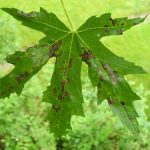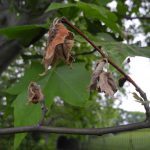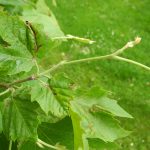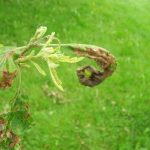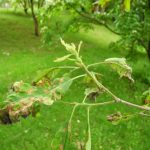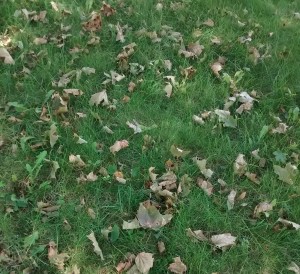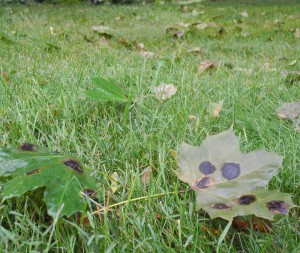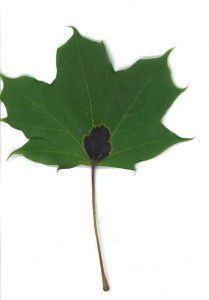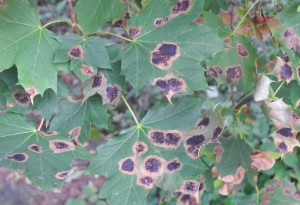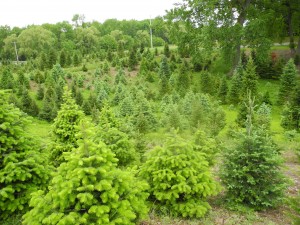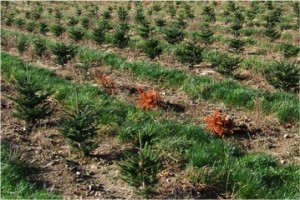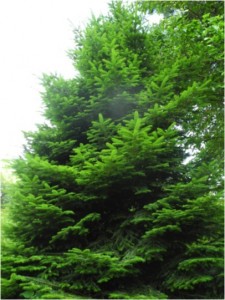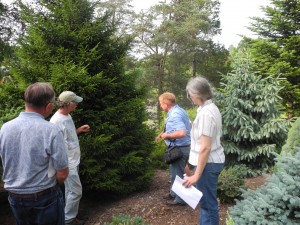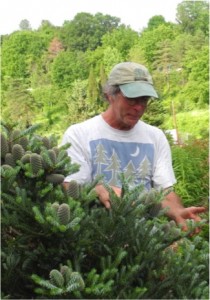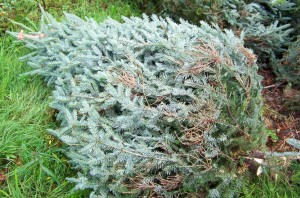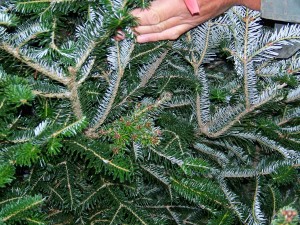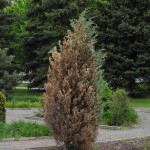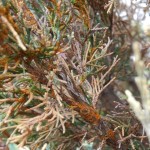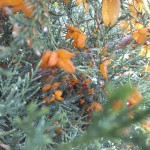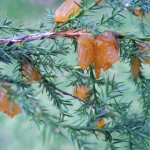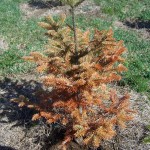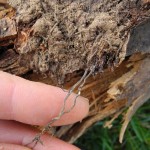Shade Tree Anthracnose
Wet spring weather brought on an outbreak of a disease on familiar shade trees. Anthracnose has affected certain species of maple, sycamore and oak trees.
Anthracnose is caused by fungi and can only infect leaves when there is consistent moisture and cool temperatures at the time the leaves expand in the spring.
- Sliver Maple leaf with anthracnose lesions.
- Silver maple canopy with affected foliage
- Blighted leaves on lawn.
Raking and removing the leaves, now or in the fall, can help remove some of the fungal spores so it is a good practice to help reduce the disease pressure for next year. The leaves can be composted (as long as the compost bin is not right below the tree) without risk of spreading back to the tree.
The good news is with warmer and drier conditions the disease will be no longer be a problem. No treatment is necessary and the overall health of shade trees is not affected by anthracnose.
- Anthracnose can lead to dieback especially on sycamore.
- Healthy new growth on sycamore.
Due to the rainy season we had, this disease is prevalent but if we have more normal spring weather next year it is quite possible the disease will not be seen at all.
- Anthracnose blighted bur oak leaves.
- Anthracnose on older leaves. New emerging foliage is healthy.
The spotted leaves will remain that way and some of those affected leaves may fall off early. However, any new growth that emerges in June and through the summer will be healthy.

